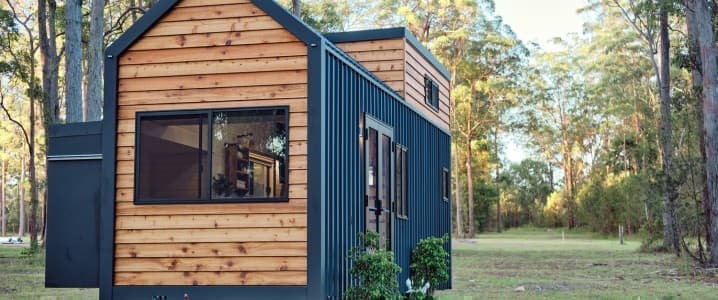Whenever the subject of air pollution and climate change is broached, most fingers tend to point at fuel-guzzling trucks and SUVs as well as giant smoke-spewing factories that release millions of tonnes of greenhouse gasses every year. Whereas the industrial and transport sectors are undoubtedly some of the biggest polluters on the planet, contributing 28% and 23% of total GHG emissions in the U.S., respectively, our humble places of residence are by no means innocent bystanders, being responsible for 20% of emissions.
Many people are waking up to this reality and opting to lower their carbon footprint by living in unusually small houses aka tiny homes. Indeed, a 2020 survey by IPX1031, a Fidelity National Financial subsidiary, found that more than 50% of Americans would consider living in a tiny home while 72% of respondents would consider using a tiny home as an investment property. Tiny homes are most popular in the northwest and northeast of the U.S. But first things first, what constitutes a tiny home? Tiny homes are considered homes anywhere from 100 to 400 square feet, although some people contend that anything above 200 square feet no longer qualifies as ‘tiny’ and should be bumped up into the category of small homes. For perspective, in 2021, the average single-family home in America spanned all of 2,273 square feet, ~10x bigger than an average tiny home. Obviously, cost is a major reason why more people are opting to live in such small dwellings. The median cost of a tiny home is $30,000-60,000 compared to $334,269 for the average American home as per Zillow. Some tiny home builders are able to go much lower because these houses can be built from reclaimed building materials including corrugated tin and windows; reused pine flooring, reclaimed barn wood siding, shipping pallets and many more materials.
Related: Gazprom: Europe Will Find It “Very Difficult” To Fill Storage For Next Winter
Renting one is also easy on the wallet, with an average unit going for ~$500 per month as opposed to $1,700 for an average apartment measuring 897 sq. ft. That much lower sticker price gives tiny home owners ample financial freedom including avoiding large mortgages as well as an opportunity to build up their savings. Indeed, 89% of tiny house owners have less debt than the average American, with a full 60% having zero debt. Meanwhile, 85% of tiny homeowners pay zero mortgage, enabling them to accumulate more savings than their larger home peers.
Ecological Benefits Of Tiny Homes
Money matters aside, there are plenty of personal and ecological benefits derived from living in smaller homes. The simplicity of tiny living offers several psychological benefits such as being less stressful to clean and maintain with too much clutter proven to diminish mental well-being. Cutting down space means fewer rooms to clean and vacuum, fewer surfaces to dust, and more time to do things you actually like. Oh, back to money matters again: the low cost of living in a tiny home significantly lowers stress levels.
And now to matters of the environment. When it comes to direct energy use, here are some interesting comparisons between tiny houses and conventional ones:
- Many tiny houses require only about six light bulbs, translating to ~914 kWh a year, or just 7% of an average home's power requirements.
- Heating an average house generates ~8,000 pounds of CO2 a year, more than 14x the 558 pounds of CO2 emitted by a tiny house.
- Cooling the average home generates about 4,000 pounds of CO2 per year compared to just 286 pounds of CO2 per year for tiny houses.
- Depending on size, tiny homes may require 100 gallons to 500 gallons of propane a year compared to up to 1,300 for a larger home.
Because of their size, tiny homes require much fewer materials to build but also much less energy to maintain, something that significantly lowers their owner’s carbon footprint. Though it may seem obvious, many people tend to forget that smaller square footage = less lumber. Energy use and products that go into the construction play a big part in the carbon footprint of a house, not just the energy-consuming appliances inside. Tiny houses win again, big time: it takes about seven logging trucks to carry enough lumber for an average American home compared to half a truck for a tiny house.
Overall, tiny homes are cost-efficient, energy-efficient, and space-efficient. The uptick in popularity of tiny home living is, therefore, a very positive development for the environment, even if it lacks the razzle dazzle of the EV revolution.
By Alex Kimani for Oilprice.com
More Top Reads From Oilprice.com:
- Chevron Expands Footprint In East Med Natural Gas Basin
- The UK Will Have Enough Natural Gas For The Summer
- A U.S. Shale Job Boom Is Coming



















For someone who lived multiple years in a broken down, unheated Buick station wagon, I shout "Huzzah" and "Hooray!" to those who would decide to simplify and downsize!
The alternative solution, less appealing to independent minded Americans, is multiple families/generations in the same house. In my part of the world, it is not only the norm, but because families are very close and relationships are a priority, the preferred method of living.